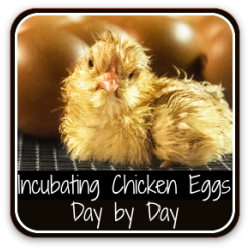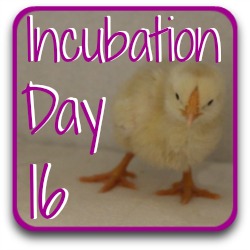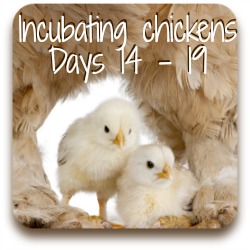- Home
- Incubation day by day
- Day 17
Chicken egg development stages: day 17 of incubation.
One day from lockdown, and our chick is nearly fully developed.
Day 17 is probably the day where least of all can be seen, and there is less to do than at any almost other day during the incubation process.
There is still advancement within the egg, but the chicken egg development stages are almost complete.
What's going on in the egg today?
- We now have only another 24 hours of incubation left before 'lockdown', and four days (on average) to hatch.
- The embryo of the first two weeks is now clearly a recognisable chick. It continues to grow in size so that it is almost filling the egg at this point.
- If we could open the egg today we'd see the yolk on either side of the chick, some fairly large blood vessels and the chick itself, covered in down but now completely wrapped inside the membrane.
What's happening to the chick at day 17 of incubation?
- The chick is now starting to curl around inside the egg. Over the next couple of days, it will continue to turn until its beak is positioned under its right wing, pointing towards the air cell. This is the ideal position for hatch.
- Both the yolk and the intestines are being slowly absorbed into the chick's body. It's critical that this process is complete before the chick starts to hatch.
Please note: the image below is a commissioned piece and is subject to international copyright laws. I am the sole copyright owner.
It must not be used, copied or reproduced anywhere without my permission.
Contact me for details and permissions for this and all other images on this page.

- The large blood vessels we have been able to see on candling are now also being absorbed into the chick. Some remain in the part of the yolk which has not yet been absorbed, but otherwise no blood vessels remain externally.
- The kidneys are fully developed and are now beginning to make urine. You'll be able to see the result of that left behind in the egg once the chick has hatched.
- The chick continues to absorb calcium from the egg shell. This strengthens its skeleton, skull, legs and other bones.
- The legs will be a critical part of hatching, so it's important that the shell contains enough calcium to strengthen them enough to take the pressure.
Chicken egg development stages: candling at day 17.
What can we see if we candle at this stage of incubation?
Almost nothing.
This is not a good day to candle the eggs. We will candle every one tomorrow (day 18) as we lock the incubator down for hatch.
At this point it's crucial that the chick is moved a little as possible, to enable it to turn into the right position.
In any event, there's very little to see. The chick fills almost the whole egg now, all we can see is a dark area – this is the chick's body.
The slightly lighter area underneath the dark in the photograph below is the yolk. The very light area at the bottom is the growing air cell.
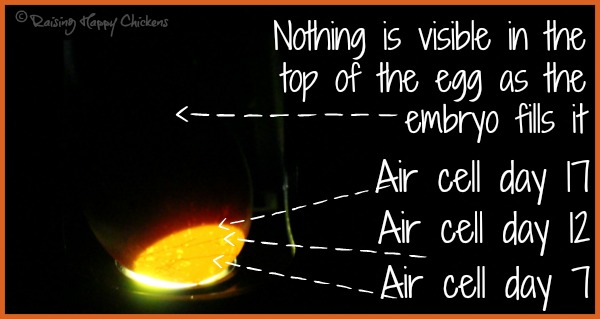
You may be able to see very light-coloured markings on the air cell. This is where I've candled at Days 7, 12 and now 17 and marked the air cell each time.
You can see from the arrows how much it's grown in those ten days.
These markings have two purposes. They tell me the chick is still growing, and they tell me more or less where the chick should begin to break through the shell in just a few days' time.
What should we be doing at this stage of chicken egg development?
Large breed chicken eggs.
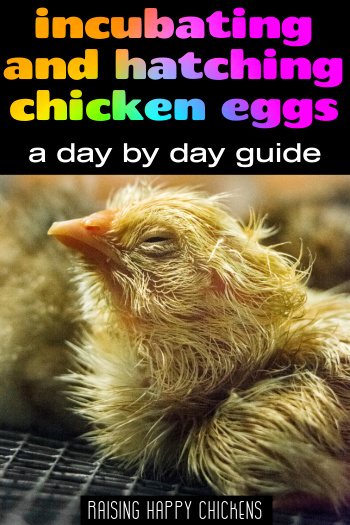
Today, we should make sure temperature, humidity and turning the eggs are consistent, as they have been for every day of incubation so far.
Tomorrow, we will be preparing the incubator for hatching, candling for the final time and adjusting humidity and ventilation levels.
Bantam eggs.
Bantams often hatch earlier than large breeds, at around day 19 or 20. If you have bantams in your incubated eggs you can stop turning them today.
If your clutch of eggs is mixed bantams and large breeds, you can choose to lock them all down today.
Should you decide to take action today, here are details of how to lock down your incubator.
Chicken egg development stages: question of the day.
What exactly does 'lockdown' mean?
Lockdown is simply the last three days before hatching. It involves...
- slip-proofing the floor of the incubator so the chicks who hatch do not slip and potentially harm their legs
- increasing humidity levels so the chick does not get stuck inside the membrane
- making sure there is enough oxygen entering the incubator
- closing the incubator lid to keep conditions stable until the chicks have hatched.
We're nearly there!
And here's what we're aiming to produce over the next few days: a healthy, happy little chick from each incubated egg!
This is one of my Wyandotte chicks at 5 days old. Notice her wings are already starting to grow. She was trying to use them to fly out of the brooder by the end of week 1!
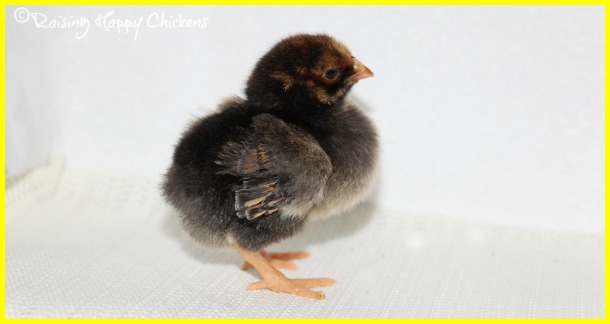
Where to now?
To return to the overview of this 21-day hatching process, use the first button link below. To return to day 16 and refresh your memory if necessary, use the second link. To move on to the next stage, use the day 18 link.
People have also found these articles helpful.
Sources.
A lot of "facts" you'll find on the internet are often people's individual views, based on inaccurate information repeated from poor quality sources.
The information I provide in this article and others is based on both my own experience of incubating and hatching chicken eggs every year for over 13 years, but on evidenced facts from scientific, peer-reviewed research and books from highly respected and experienced poultry keepers such as Gail Damerow.
Some of the trusted sources I have used in this article are these.
Avitronics: Heart Rates. Pub. Avian ID, 2020.
Damerow, Gail: Hatching and Brooding Your Own Chicks. Pub. Storey, 2013. See my review, here.
Hall, C., et al: A new candling procedure for thick and opaque eggs and its application to avian conservation management. Pub. Journal of Zoobiology, 2022.
Hamburger, V and Hamilton, H L: A series of normal stages in the development of the chick embryo. Pub. Journal of Morphology, 1951.
Leonor, H., and Chaveiro, S: The Effect of Candling on the Hatchability of Eggs from Broiler Breeder Hens. Pub. Journal of Applied Poultry Research, 1993.
Phuphanin, A., et al: Smartphone-Based Device for Non-Invasive Heart-Rate Measurement of Chicken Embryos. Pub. National Center for Biotechnology Information, 2019.
Vargas, R., et al: Egg Candling Analysis Equipment Design: A Safety Solution. Pub. Journal of Social and Behavioural Sciences, 2018.
Wu et al: Egg fertility and reduced egg fertility, hatching success, and larval survival. Pub. Science Direct, 2003.
- Home
- Incubation day by day
- Day 17
